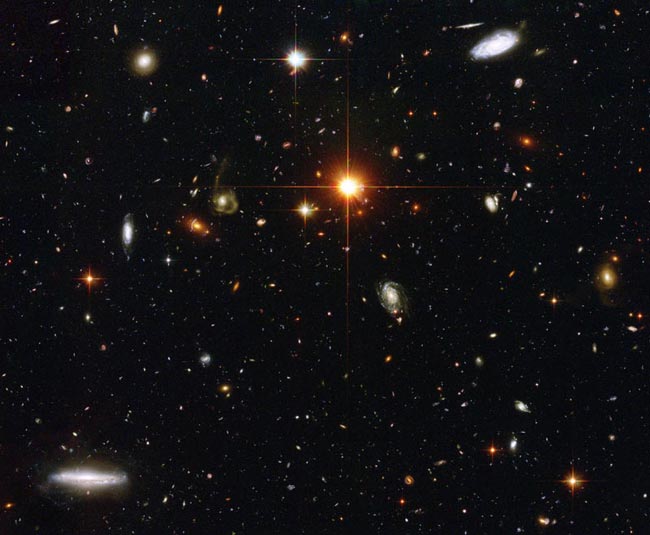Hubble Finds Galactic Candy Store

The Hubble Space Telescope has spotted of acollection of galaxies with more variety than a candy store.
Some are big; some aresmall. Some are old; some are new. Some are nearby; some are far away.
But one thing many of thehundreds of galaxies have in common is that they've never been seen untilHubble recently captured their light.
This image, which covers apatch of sky only a fraction of the area of a full moon, provides a typicalview of the far-off places in the universe. As some of these galaxies a rebillions of light-years away in space, looking down this long corridor ofgalaxies is like looking billions of years back in time.
The larger, brightergalaxies in the image are large, fully formed galaxies that are relativelyclose to us. Several of them are spirals with flat disks that are orientedeither edge-on, face-on, or somewhere in between to Hubble. You can also seeelliptical galaxies and other more exotic shapes with bars or tidal tails.
The smaller galaxies areactually just further away and are faint because their light has taken billionsof years to reach us. So, in fact, the light from these galaxies is coming froma much younger version than what exists - or doesn't - today.
At least a dozen stars fromour own MilkyWay Galaxy dot the foreground of this image, the brightest of which is thelarge red object in the center. Stars are easily spotted by their diffractionspikes - the long cross hair lines that come from their centers. These are animage artifact caused when starlight travels through a telescope's opticalsystem.
Breaking space news, the latest updates on rocket launches, skywatching events and more!
This image is a composite ofmultiple single field exposures taken by the Advanced Camera for Surveys inSept. 2003. The image took nearly 40 hours to complete - one of the longestexposures ever taken by Hubble.
- Best Hubble Images
- Amazing Images: Photos Submitted by You!
- Hubble Finds Farthest Galaxies Strangest Yet
- Hubble Lifts Fog on Early Universe
- Details Emerge in Robotic Plan to Service Hubble
- Super Telescopes in Space and on the Moon
